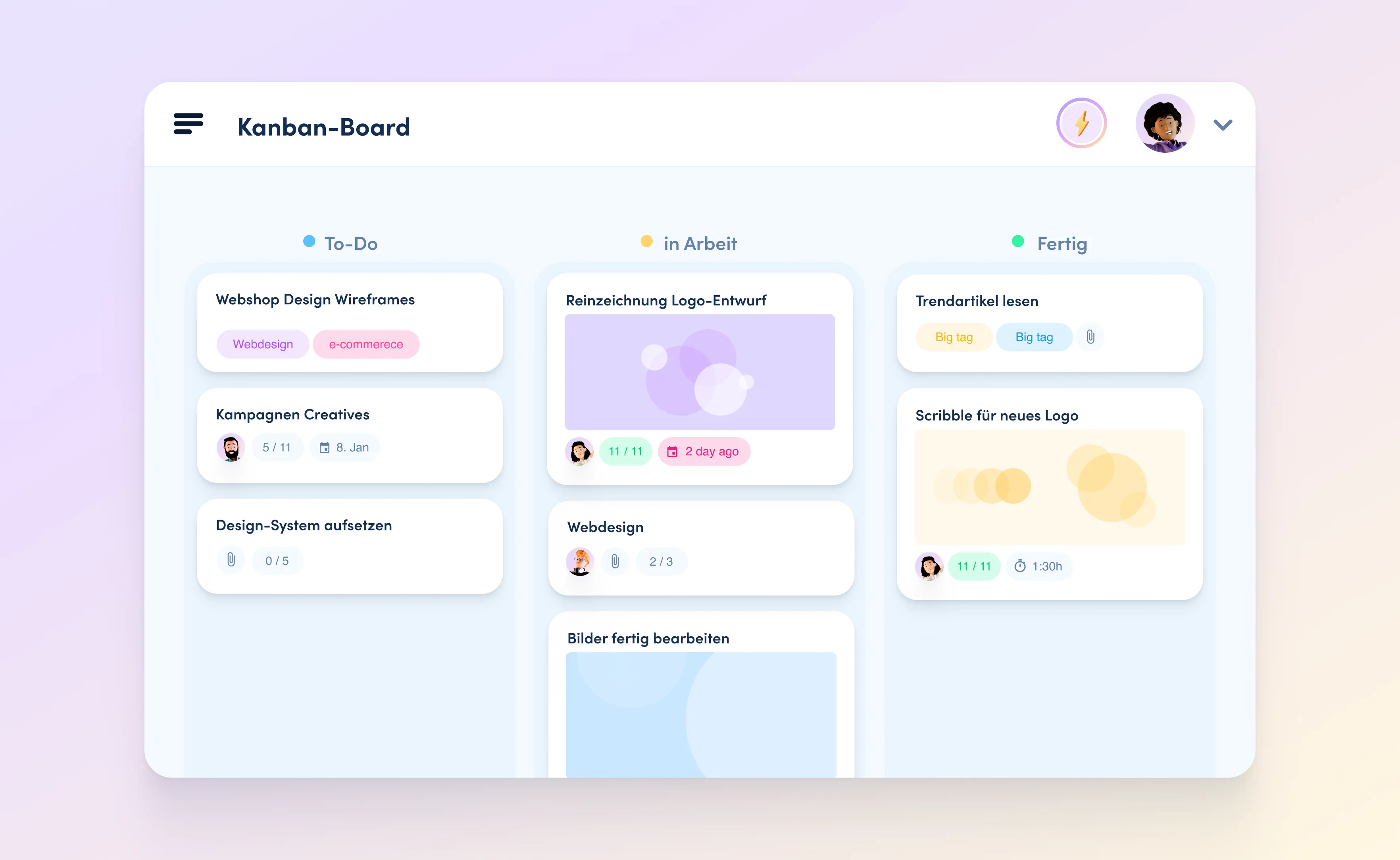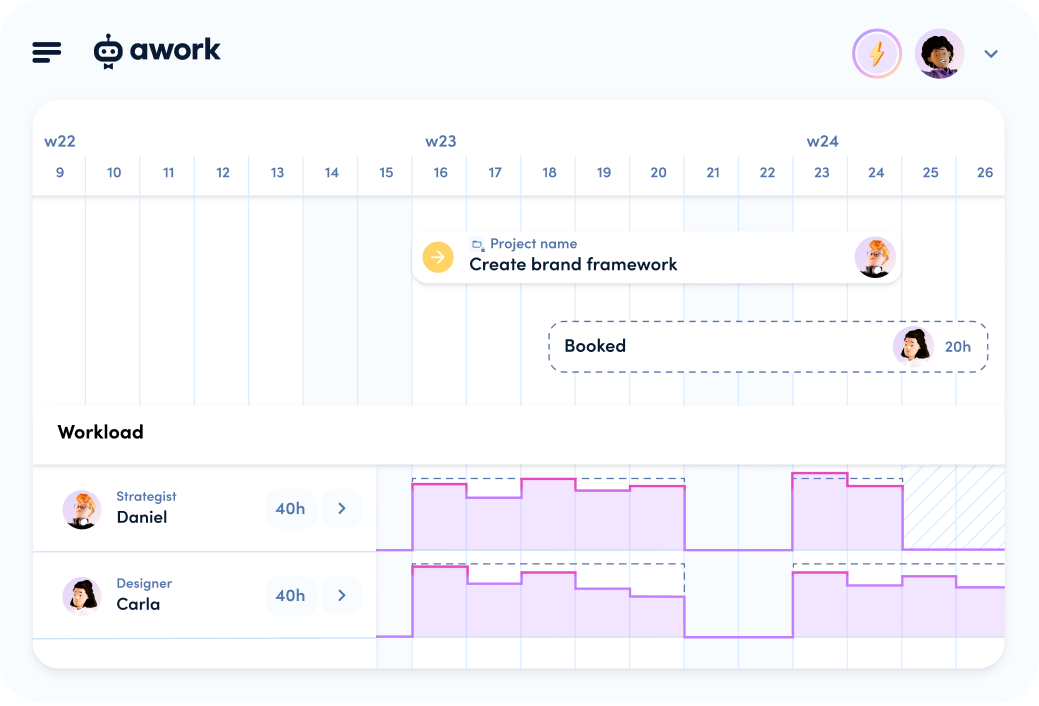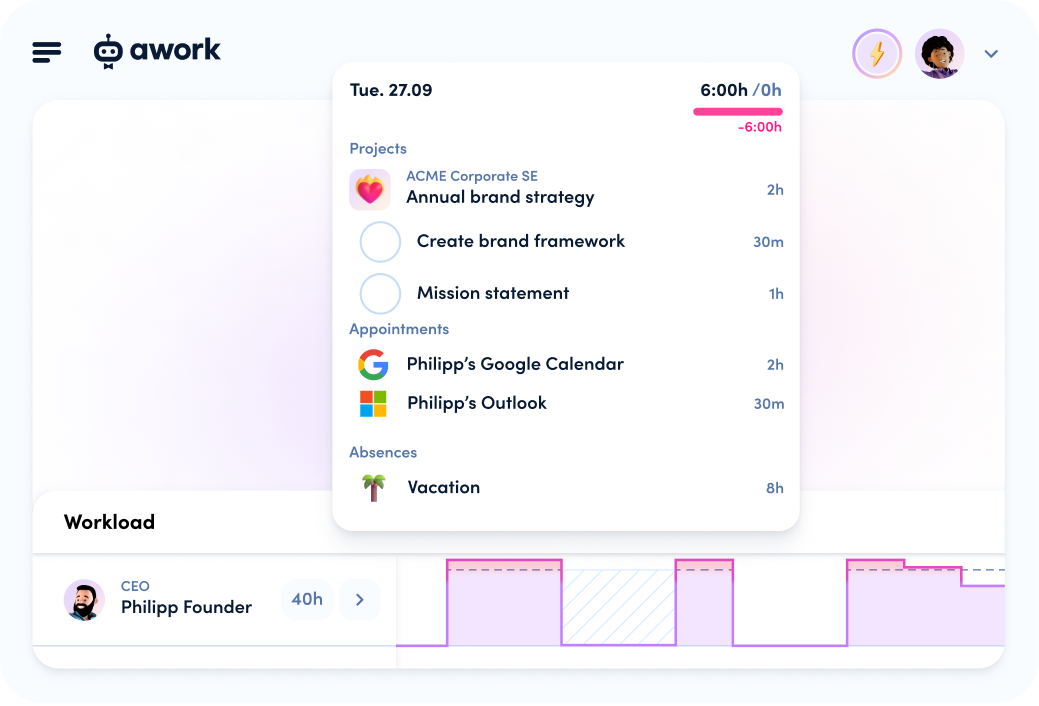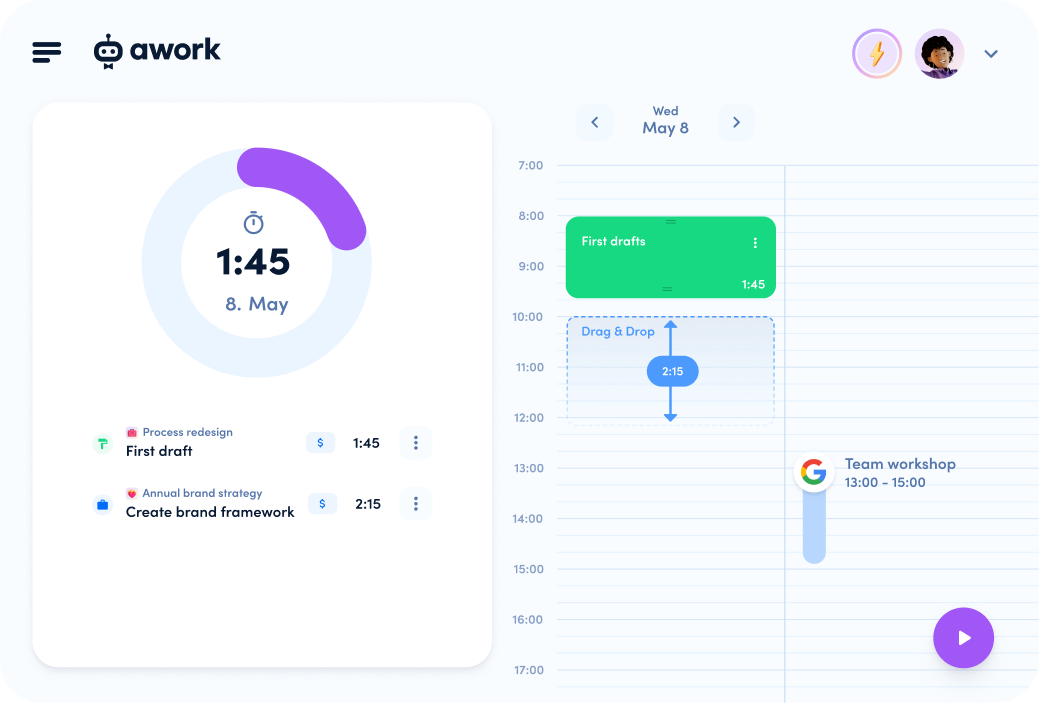Kanban… You've probably heard of it before. But what exactly is Kanban?
It all started in 1947 with the smart idea of a Japanese car manufacturer:
To achieve shorter lead times and avoid bottlenecks, an engineer from Toyota developed the Kanban system. He was inspired by the stock plan in the supermarket: reordering only takes place when a product stock runs out.
You can apply the same principle to your work in projects: You only start a new task when the previous one has been completed. This way, you avoid that too many tasks are started in parallel and not reliably finished.
The word Kanban is Japanese and means "card," so this method consists of a card system. The principle was related to software development in 2007 by David Anderson, from which the current Kanban method has evolved.
Let's dive deeper:
How does Kanban work?
Kanban is an agile method for organizing work. It is flexibly adaptable, creates clarity, and helps you to improve your workflow.
The Kanban board is the primary component of this method. You can display a board classically as a pinboard or in a suitable project management software like awork. The latter offers the great advantage that your mobile board is always available for everyone and from everywhere.
Each Kanban board contains colored task cards for different topics, as well as three process columns, which show the processing status of the respective task.
On the far left, you'll find the backlog, the place where you collect all pending to-dos. In the middle, you will find the currently in progress tasks - also called WIP ("Work in Progress"). On the far right, you will find all completed tasks.

Depending on your project, you can add as many intermediate steps as you like, such as a review column to check your tasks or discuss them with your team. Thanks to the rankings, you can also prioritize tasks in the individual columns to get an accurate understanding of the current tasks.
With a Kanban board, you are spared confusing lists with jumbled tasks; instead, you keep a very clear overview of all tasks. This is because all to-dos are processed in small steps and successively moved in the Kanban board columns if the task status changes.
How do you start with the Kanban method?
These four change management principles can help you:
Start with what you are doing right now
Start exactly where you are right now. When using a Kanban board, it is important to start with current processes and map them realistically in the system. Gradually, this process can be changed.
Agree that evolutionary change will be pursued.
The goal is to constantly evolve and achieve improvements in small steps using the Kanban method.
Respect existing processes.
The Kanban concept is very straightforward and easy to implement. This means that all existing roles, processes, and responsibilities remain unchanged.
Encourage leadership to be shown at every level of the organization.
To achieve long-term improvement, every contributor on your team should participate. Encourage all levels of the organization to develop concrete proposals and actively communicate them so that your team can develop collaborative plans.
Core practices of the Kanban method
Now that you've learned the basics, we'll introduce you to the six core practices. This way, you can work even more efficiently with your team!
- Design: The Kanban board is used to visualize your tasks. It is important that the columns for the processing status are clearly defined. Otherwise, you can design your board freely. For example, in awork add suitable photos and graphics to your tasks.
- Limitation: In order for your team to establish a perfect workflow, you should limit the tasks in the individual columns. That means each column may contain a maximum defined number of cards.
- Control: In order to improve the workflow, you and your team should keep an eye on important variables such as throughput times and queues. In this way, you will quickly recognize where there is still potential for improvement, and, based on this, you can optimize individual variables in a targeted manner.
- Regulation: The limited tasks and defined columns are part of the regulation and help you and your team to make all workflows more efficient, thanks to clear structures. These rules should be visible to all members at any time on the Kanban board.
- Cadences: These are meetings where you can give each other individual feedback as a team. Cadences should be held regularly so that each individual can work on and improve their skills.
- Kaizen: This word comes from Japanese and is formed from the syllables Kai (change) and Zen (for the better). The kaizen theory has the background of going through a continuous process of improvement and constantly working to optimize a company step by step.
Kanban vs. Scrum
Between Kanban and the agile development method Scrum, some similarities can be found. Both are used in self-organized teams and rely on transparency as well as a constant change of the original setting by evaluating relevant variables. A division of individual tasks into smaller units can also be found in both methods to facilitate the workflow.
But what exactly differentiates Kanban from Scrum?
- Kanban gives you more freedom: Iterations, prioritizations, cross-functional teams, and other techniques are optional - these applications are mandatory in Scrum.
- As an indicator for planning and process improvement, Kanban boards use lead times, in Scrum, it is team velocities.
- If required capacities are free, you can work on new requirements with your team and the Kanban method - in Scrum, this is not possible during a Sprint.
- In Kanban, no roles are predefined, but in Scrum, there are three predefined roles at the beginning of a project.
- Several teams or even individuals can share Kanban boards and continuously develop them further. The sprint backlogs in Scrum only belong to one team and are deleted after each sprint.
Use Kanban in awork
Do you want to really take off with the Kanban method? Then awork is the perfect companion for you and your team. The Kanban board in awork contains a single column for each task status; with the plus button you can quickly add additional columns. I.e., you can customize all columns and add more as you like - so you can tailor the board perfectly to your team's process. For example, if you are part of a marketing team, you could create an additional process column for your research work.
You can easily move all tasks in awork and move them to the next process column by drag-and-drop. You can also rearrange columns in this way. With a click on the icons, you can adjust agents or deadlines of tasks and view further details by clicking on the task name.
Additionally, you can group tasks by lists and users and switch to the presentation mode of the agile Kanban board. With awork, you can keep track of your to-dos, manage your projects and even increase your team's productivity in the long run!
Conclusion
With Kanban software, you can easily organize workflows by grouping tasks in the Kanban board according to their task status.
This approach is not only helpful to finally put an end to your constant task confusion, but it also improves the workflow within the team!























